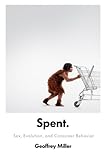Kitchen Craziness
When John and I ordered food this week eye of round roasts were on sale. I hadn't cooked a roast in awhile so I thought it would make a good weekend meal. Given that I didn't have anything planned for the weekend I knew I'd have time to cook it. When it arrived it was good until Saturday so that forced my hand of when I'd have to make it. Friday night I injected 4 cloves of garlic cut into slivers into the roast and set it to marinate in red wine and herbs. While doing the preparation I remembered just how much food a 3 lb. roast makes so I decided to make it a Gilman Manor dinner party for Saturday.
While a roast and a couple of simple sides would make a fine meal I felt like being a little more adventuresome. Ever since the cooking club I was in disbanded I've not been experimenting as much as I used to. As such I went a little nuts and prepared a mini feast. I planned around cooking the roast using a high temperature roasting method that was new to me. Turns out my oven didn't agree with that method and I ended up having to do another hours of normal roasting at the end to get it up to temperature. That might have been avoided with the use of one of those fancy remote temperature monitors but that feels too gadgety.
Since my oven was tied up for most of the afternoon before putting in the roast I made a batch of cookies as part of dessert. While I have a simple recipe I usually use, I had a box of Cherrybrook Kitchen chocolate chip cookie mix laying around and just used that. They always come out tasting great and recommend them for the allergy conscious. Having no such allergy issues I use real butter, negating the dairy free mix.
For one appetizer I sliced up some Cabot Garlic & Herb Cheddar and an awesome Smoked Rambol served with some Wheat Thins. Not the highest class cracker, but I like the way they taste. The other appetizer was plain rolled salami, rolled salami stuffed with the amazingly tasty Peppadew Sweet Peppers, and pitted kalamata olives.
For a first course I made a white bean and tomato soup with sweet potato tortillas. Neither of these dishes turned out quite right. The soup ended up too salty but was nicely offset by the tortillas. I was modifying a refritos recipe into a soup by thinning with tomato juice, which means that I really should have cut the salt when cooking the base bean recipe. As for the tortillas they ended up more like flat pancakes. I'm not quite sure what went wrong there. Thankfully I have leftover sweet potato mash that I can try making another batch with as soon as I get some more flour.
My lack of flour is a result of using almost 50% more water than called for while making a sun-dried tomato focaccia. Needless to say when the bread machine got to the kneading cycle I had a big mess instead of a nice ball of dough. My attempts to thicken it up with some extra flour didn't amount to much so I had to just dump the lot and try again. Using the right amount of water ended up creating a much better loaf. A little moist on the bottom but super tasty.
While typically a meal onto itself I couldn't resist making a batch of broccoli risotto. It was a recipe I'd used before and was very happy with the results. We had gotten a fresh head of broccoli with our Boston Organics delivery which was just calling out to be used. Alas part way through the recipe, when I needed to add the white wine, I was shocked to realize during my quick glance into the liquor cabinet the previous night I'd mistaken a bottle of Q Tonic for a bottle of white wine. Thankfully my upstair neighbors had a bottle of white wine, albeit slightly suspect. Turns out Hot Sun Tomato and Pepper wine is a much better cooking wine than drinking wine...
The last side dish for the roast was glazed carrots using a recipe from Julia Child. It's a good thing I don't use her recipes too often otherwise (as some friends wish I already did) I'd probably end up gaining weight due to the copious amounts of butter. It does always end up tasting so good though.
The other dessert was a fruit bowl of kiwi, grapes, and mango. Needless to say by the end of the dinner we were all stuffed. The roast cooking issue threw the timing off but that was okay since I goofed the cooking times for a couple of the other dishes. That worked out well as it gave a little reprieve between the onslaught of food. Overall I'm very pleased as were my dinner guests with how the dishes turned out even with the few hiccups and substitutions.

